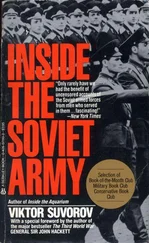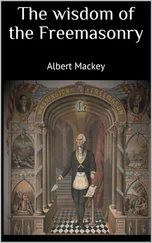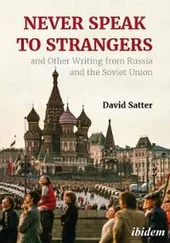An important point to bear in mind at the outset is what the term ‘passport’ means to different people. Someone brought up in the Western world immediately associates the word with foreign travel. As we shall see, this was not always the case; but since the late nineteenth century, in the West ‘passport’ has meant only a document allowing the bearer to travel to other countries. This is not the case in Russia. To this day, most Russians associate ‘the passport’ with the identity document which all Russian citizens aged fourteen and over must have. (Until 1997 internal passports were issued only from the age of sixteen.) Only about 20 per cent of Russians today have a passport for foreign travel. Hence, when I call chapter 2‘Fifteen Passport-less Years’, I am referring to the lack of an internal passport. Russians who travelled abroad in the early years of the Soviet Union still needed to have a passport for this purpose.
In this chapter I shall be dealing mainly with the purpose of ‘identification’; and not with the passport in general but specifically with the Russian passport (up to the establishment of the Soviet Union). We are talking here about the formation of the official portrait – a visualization of how the person was regarded by the state authorities. However, before going into details, I shall say a few words about the European passport tradition, which, of course, affected developments in Russia.
In the countries of Europe, the increase in the use of passports is part of the overall picture of the early stages of the transition from pre-modern society to the modern, which took place in the fifteenth to seventeenth centuries. 2This transition was marked by the drive to consider a person as an individual and to rationalize his behaviour; by the spread of written communication, costing and planning; and by the creation of indirect forms of control by the state towards its subjects. The passport (or more precisely, its early equivalent) was used both in its ‘direct’ meaning (to pass through a port or through various borders), and also as a way of dealing with vagabonds, the poor and criminals. The increase in the use of passports in Germany in the fifteenth century, and later in other European countries, was connected not only to the growth of trade links and the number of pilgrims, but also with the associated rise in social activity brought about by the increase in the numbers of tramps and people on the run. The passport became the privilege of those who did not wish to be considered as tramps. It performed a defensive function as a kind of certificate of protection. Such a document usually declared that its bearer belonged under the protection of their sovereign (as the modern British passport still does). The invention of the printing-press in the middle of the fifteenth century allowed for the production of standardized documents, and at that time it was virtually impossible to make forgeries.
The use of documents as a means of identifying the bearer comes much later. According to Valentin Groebner, even in the sixteenth century in European countries external signs, perhaps only tangential to the bearer, were still used for this purpose. 3These included, for example, signs of a man’s social status, such as particular details of the clothes of an ambassador or a courier. But such signs could not reliably guarantee the identity of the bearer. The same could be said about letters of recommendation, because as a rule the person presenting the letter was not described in it, and even a mention of their name was no defence against a possible substitution.
It seemed that the only reliable way to solve the problem of identification would be a description of a person’s individual external characteristics. And yet right up until the modern era, the most noticeable element of a person was considered to be their clothing; what one might call their ‘individuality’, if noted at all, concerned their occupation, rather than any particularities of their face or body. 4It is no coincidence that the portrait is among the later genres of painting.
Such an impersonal understanding of the individual was typical in Russia also. Perhaps in this sense linguistic details are especially significant. Relevant here is this quotation from Viktor Vinogradov’s unfinished article about the history of the words ‘person’ or ‘personality’ [Russ: lichnost’ ]:
In old Russian up to the seventeenth century there was no need for a word which would match, however vaguely, the contemporary concept and understanding of ‘personality’, ‘individuality’ or ‘individuals’. In the ancient Russian world view the individual was defined by their relationships: to God; to their local community; 5to the various levels of society; to the authorities, the state and their Motherland; and to their specific place of origin; and this was expressed and understood using different terminology. Of course, certain characteristics which marked out a person were clear and were recognized in ancient Russia. For example, whether they lived alone or were isolated from society; the consistency of their character, based on various signs; their ability to concentrate or be motivated by their actions, and so forth. But these were combined with the person’s characteristics and their own peculiarities (such as the person, the people around them, the individual, their soul, perhaps their very being). In both social and artistic terms, up to the seventeenth century the ancient Russian understanding of a single specific person, their individuality or their self-awareness was totally alien, as was the concept of the individual ‘I’ as the bearer of social or subjective signs or characteristics (compare this with the lack of autobiographies or tales of the individual in ancient Russian literature, or the production of portraits and so on). 6
At the same time, in areas such as the law the individual person was fully recognized: punishments for violations of the law were borne by the individual. What’s more, it is worth keeping in mind the expressly masculine nature of the ‘individual person’, which by default is always taken to be a man rather than a woman. It is indicative that up until the beginning of the twentieth century passports were issued only to men. Women, like children, were included in the man’s passport, as he was the head of the family, and they were not considered as individual citizens with rights. The male nature of the passport defined certain characteristics of the document which would continue into later periods as well, such as the indication of whether the holder was eligible for military service, the absence of any reference to his or her sex, and others.
In the course of the eighteenth and the first half of the nineteenth centuries the individual’s personal characteristics and qualities were gradually revealed more and more; but only in the middle of the nineteenth century did concepts of individuality and personhood reach a fully formed state. In close parallel with this process, it became the norm to use documents to determine who the individual was (in many ways the history of bureaucracy is defined by the development of methods of identification). Indeed, in the drive towards defining the individual, the passport played a highly significant role and one which has yet to be fully evaluated. 7
It is likely that in the Middle Ages the actual word ‘passport’ signified a permit to pass through the gates of a city. 8The word became established in Russian usage only from the beginning of the eighteenth century; but this does not mean that such documents did not exist before this. In order to travel within Russia, foreigners (principally merchants) were issued with letters of passage. 9They are known to have been in use at the end of the sixteenth and beginning of the seventeenth centuries, but officially they were brought in only by decree of Tsar Peter the First in 1719 (Peter the Great, reigned 1682–1725). As a rule, they contained the following details: name (or sobriquet); starting point of journey; intended destination; title or rank (or occupation); details of any family members travelling with the bearer. 10It appears that the details contained in the letters of passage for foreigners served as the template for letters of passage for Russian subjects, too. According to the Legal Code enacted by Tsar Alexei Mikhailovich in 1649, every subject who travelled abroad was obliged to carry a letter of passage, which the provincial governors were ordered to issue without delay (Chapter 6, Article 2 of the Code). Anyone going absent without leave faced severe punishment. This could mean the death sentence, if it was deemed they were travelling ‘for treasonous or any other kind of evil purpose’ (Article 3). 11
Читать дальше












